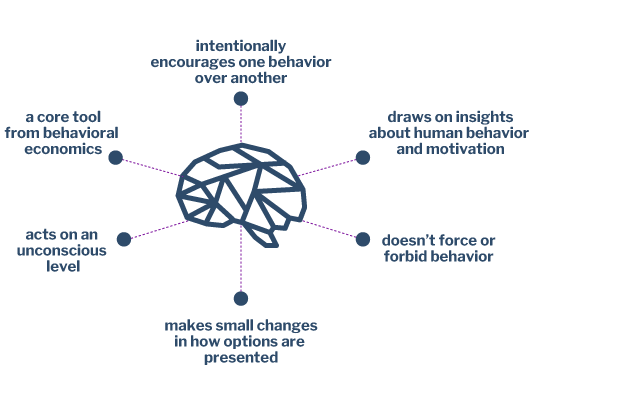The daunting challenges we face in achieving gender equality include mindsets we may not even be aware of. We call these mindsets biases, and nudging has become a trusted way to influence behaviour by working around these unconscious tendencies.
Why do we use behavioural science tools?
Behavioural economics recognizes that people do not always make rational decisions. This is because consciously and unconsciously, we make mental shortcuts in our brain based on our upbringing and cultural environment. These shortcuts, called heuristics, enable us to make quick, simplified decisions. Sometimes they work really well, but other times they lead to cognitive bias.
Systemic bias unavoidably affects our expectations of men and women, and how we structure opportunities available for all genders. The lack of women in leadership roles, for example, results from cultural assumptions of women to be caregivers and men to be visible leaders, as well as structural policies providing only women with parental leave. This means bias fundamentally influences how we make decisions, meaning rational and emotional approaches to impact behaviour are often unsuccessful.
As soon as we accept that our mind works on an unconscious level, we can start to anticipate how people make decisions, based on cultural values and biases as well as rational calculations of utility. With that in mind, we can use nudges to bypass the unconscious brain and present options in a way that intentionally makes people choose the option that benefits society or themselves.
What is a nudge?
| Nudging is trying to facilitate better behaviour (for health, society and the environment) by changing the way options are presented to people and making the preferential option attractive and easy, without limiting people in their freedom to choose. Nudges steer behaviour slightly, focusing on unconsciously made decisions. |
Why is nudging relevant to gender?
Policies are often designed to respond to the rational part of the brain. But gender inequality persists because it is driven by underlying biases and is often not seen as a priority in the policy process. Because nudging works especially well in situations where decisions are guided by unconscious factors like cognitive bias, we can use it to bypass this obstacle and make gender equality more present in policies without forcing it on constituents and policy makers.

Nudges can be integral parts of policy, and they can be introduced in the social dialogue that leads to effective policy design. Nudging toward behaviour change is proven to work throughout the policy cycle, incrementally driving greater equality in the workforce and surrounding areas (e.g. education, parental expectations, healthcare), and eventually leading to gender sensitive mindsets and social values.
